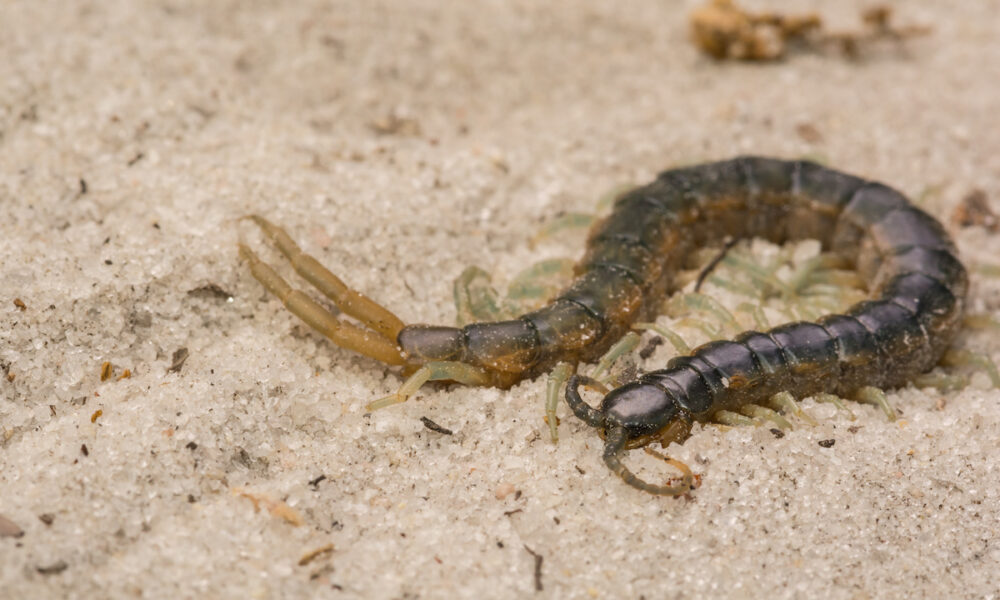
Bark Centipede (Scolopocryptops sexspinosus) are agile, fast-moving arthropods (not insects) that tend to startle people with their appearance. Unlike tubular millipedes, centipedes have flattened segments, and this helps them squeeze through narrow spaces.
Species
Common Name(s): Bark Centipede, Stone Centipede
Order: Scolopendromorpha (bark) Lithobiomorpha (stone)
Family: Go by the Order
Common Species: Go by the Order due to numerous species
Commonly Confused With Millipedes, Other Centipedes
Appearance
Bark centipedes have one pair of legs per body segment. This differentiates them from millipedes, which will have two pairs of legs per body segment. They have a considerable variation in size. Their feet have little claws/barbs at the end to help them get a better grip on prey. In Georgia, most species of either one of these centipedes are black, brown, tan, red, or orange and they are flattened from top to bottom.
Habitat
Bark centipedes are found across North America. These centipedes live outdoors and can be found under rocks, logs, leaf piles, debris piles, etc. Any area that is high in moisture is the perfect location for these centipedes to reside.
Diet
Bark centipedes eat insects and other small arthropods, usually their size or smaller. Larger species of bark centipedes can eat larger vertebrates like bats, frogs, rats, mice, etc.
Traits
These centipedes are voracious predators. They are beneficial to have around the outside of your home, but they do present some risk. Centipedes can bite and inject venom, which can cause pain and irritation. Most of the bark or stone centipedes in Georgia are usually not strong or large enough to bite, but it is not impossible. If you are bitten, unless you are allergic to the venom, it will be equivalent to a mild bee sting.
Dangerous?
Centipedes are active hunters and roam around looking for small animals to bite and eat. They eat insects, spiders, and other small invertebrates.
They can pinch and bite with their last pair of legs. The bark centipede’s bites can cause numbness, swelling, intense pain, discoloration, necrosis, and require medical assistance, although there are no really dangerous, deadly centipedes, and no confirmed human fatalities.
Bark Centipedes have a fang that injects venom into their insect prey. Larger species of centipedes administer more venom through a bite and can produce more extreme pain. Generally, centipede bites can be extremely painful, but, they are not usually fatal to humans. It is recommended that Centipedes should not be handled since they may bite.
Fun Fact
Using their last pair of legs, many stone and bark centipedes can grab or pinch a threat to get a better grip before biting or as an alternative to biting. They tend to be sharp/pokey, and that is usually all the deterrent needed!
Contact Us
Choose Proactive Pest Control for professional, comprehensive, guaranteed pest, and lawn management. The pros at Proactive will work diligently to gain your trust, confidence, and your total satisfaction. CALL US TODAY at 770-800-PEST to schedule a free, no-obligation inspection and evaluation for your home or business. Or, contact us for a FREE consultation. Let us show you why Proactive Pest Control is northeast Georgia’s first choice for pest, termite, and lawn services.